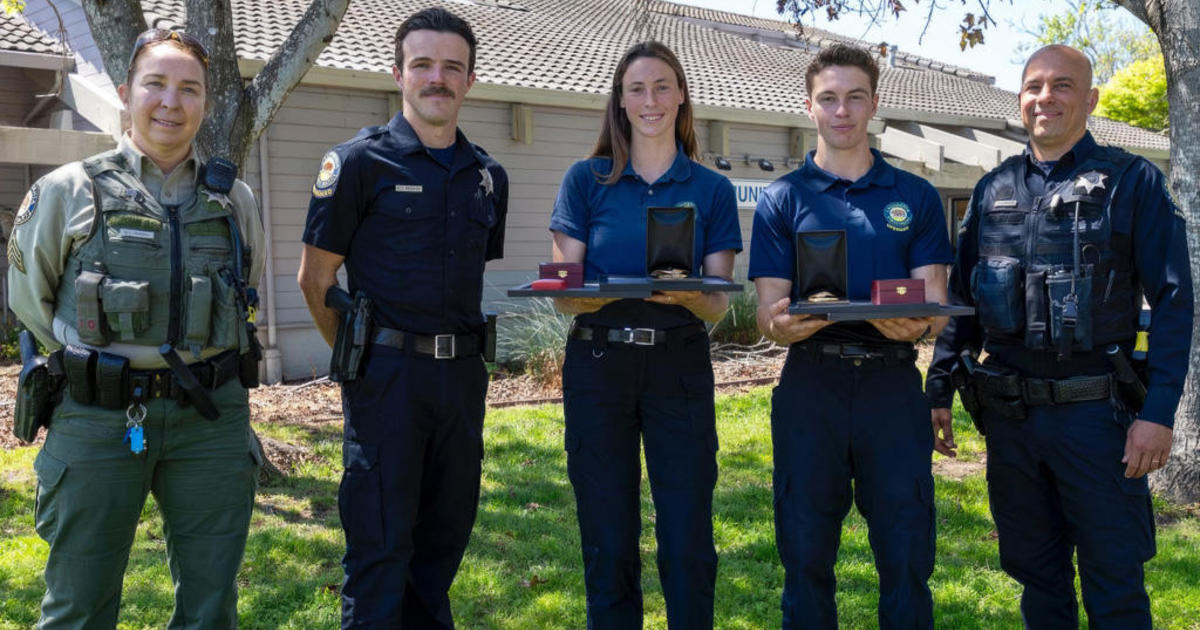Foodies Turn To Foraging To Connect With Nature
When Chef Josh Skenes first sought the flavor of Northern California, he went to local growers. Then he went beyond farms, joining a growing number of urbanites who are returning to humanity's first pursuit — foraging — in a search for food that satisfies a deeper hunger.
Eating foods that grow wild and learning to identify, harvest and prepare them satisfies a need to connect to the environment in a novel way. Plus, food like spicy pods of wild radishes and sweet fennel flowers tastes good, especially in the hands of Skenes, a veteran of top restaurants who is among several high-profile chefs incorporating wild elements into his menu.
Skenes said the greens, roots, flowers and berries that thrive in California's sun and fog-drenched landscape taste sharper and purer than their farmed cousins.
"How do you find the deepest point in flavor?" he asked. "The wild is usually the answer. You can't duplicate nature. There is a difference between something that grows naturally and something that is forced."
Many might doubt the wisdom of eating stinging nettles or the tiny, stringent berries of the pink-flowered currant. But Skenes found an audience among San Francisco's affluent, food-mad denizens. Demand has pushed him to expand, in one year, from once-a-week suppers to a full restaurant serving an eight-course tasting menu.
He's in good company. There is plenty of wild food on the city's best menus, from the venerable Chez Panisse, which has long served wild mushrooms, to Daniel Paterson's Coi.
Chez Panisse owner Alice Waters said wild foods provide a direct connection to the outside world, untouched by human influence.
"The flavor and appearance of fennel flowers, miner's lettuce, golden chanterelles, or pristine Pacific king salmon is determined solely by the nature of each, uninfluenced by the desires of growers or consumers," Waters said.
The drive to get close to nature — close enough to taste it — has inspired others as well.
The group ForageSF throws several monthly dinners that sell out at $80 a person, gathering enthusiasts around a communal table heaped with dishes like wild fennel flan with blood red daikon, garlic crostini and duck confit, or drakes bay oysters with tempura-fried sea beans.
The founder, Iso Rabins, plans to start offering subscriptions to wild-food boxes with veggies, mushrooms and fish, where too-busy city dwellers can take home tasty bits of wilderness gathered by expert foragers.
"When you know what's edible in your area, you never look at the environment in the same way again," Rabins said. "You value it more — it's less abstract."
Kevin Feinstein, a forager and instructor with the group, agreed.
"We come at it from the perspective of uber-sustainability," he said. "We are part of the ecosystem. We want to be involved in it. Ideally, it's a reciprocal relationship."
The interest in wild food walks also shows how foraging has grown. On a recent Saturday, 15 people gathered in the parking lot of an Oakland park to follow Feinstein as he identified edible plants.
Before they even left the parking lot driveway, he'd introduced the group to live oaks that produce tiny, tannic acorns, a California black walnut tree, a California bay tree — with spicy caper-like flower buds and leaves far more potent than those found at the supermarket — wild fennel and its look-alike, the poisonous hemlock.
"Delicious," said Chris Cukor, a new Oakland resident, eating flowers handed to him by his wife, Nina Wang-Cukor.
"We love eating in general, and this seemed like the best way to get to know the neighborhood — eating our way through it," she said.
Foraging isn't confined to the West Coast.
Steve Brill leads walks all over New York, including in Brooklyn's Prospect Park and Manhattan's Central Park. Identifying wild edibles awakens in people a "primal hunger," Brill said.
"They start eating these things, and they don't want to stop," he said. "We shake a mulberry bush and eat. We dig up burdock root, wild carrots, wild parsnips, we collect sassafras. They want to take them home, cook with them, eat them."
Foragers can run into trouble. Brill got arrested once for harvesting in Central Park, and many public spaces have rules against collecting.
San Francisco bans wild food from markets or restaurants, but Rabins said the city seems willing to look the other way.
"People come into the city to experience these things," he said. "It may be on the books that we're not supposed to be there, but it is in everyone's interest to keep it going."
Still, there are dangers to eating wild foods.
"Anybody who is foraging and serving should be very knowledgeable, know the edible plants and know how to identify their toxic look-alikes," said Kent Olson, medical director of the San Francisco division of the California Poison Control System. "Consumers have to put their trust in procurers and servers — so try to find out the reliability of the people procuring the foods."
All of it is an opportunity to learn more about the natural world, Skenes said: "It's about constant exploration."



